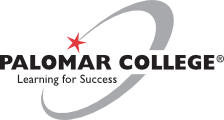
Course Outline
GCIP 268 - Digital Imaging with Drones II
Fall Semester 2022
Basic Course Information
Courses numbered 1 - 49 are remedial or college preparatory courses which do not apply toward an A. A. Degree and are not intended for transfer. Courses numbered 50-99 apply toward an AA Degree, but are not intended for transfer. Courses numbered 100 and higher apply toward an AA Degree and/or are intended for transfer to a four-year college or university.
D - Credit - Degree Applicable
GCIP
Digital Imaging with Drones II
Units and Hours
3
Grade/Pass/No Pass
| Hour Type | Units | Weekly Hours | Semester Hours x 16 Weeks | Semester Hours x 18 Weeks |
|---|---|---|---|---|
| Lecture Category - | 1.50 | 1.50 | x 16 Weeks - 24.00 | x 18 Weeks - 27.00 |
| Lab Category - | 1.50 | 4.50 | x 16 Weeks - 72.00 | x 18 Weeks - 81.00 |
| Subtotal - | 6.00 | x 16 Weeks - 96.00 | x 18 Weeks - 108.00 | |
| Out of Class Hour - | 3.00 | x 16 Weeks - 48.00 | x 18 Weeks - 54.00 | |
| Totals - | 9.00 | x 16 Weeks - 144.00 | x 18 Weeks - 162.00 |
Requisites
To satisfy a prerequisite, the student must have earned a letter grade of A, B, C or P(Pass) in the prerequisite course, unless otherwise stated.
Prerequisite: GCIP 168
Catalog Description
Intermediate uses of unmanned vehicles for digital imaging. This hands-on course covers high resolution video, aerial imaging, intelligent mission planning, and the use of multispectral payloads for image capture, editing, mapping and related uses.
Student Learning Outcomes
Outcome
Use intelligent mission planning modes to script out flight paths for image capture.
Use NDVI payload, capture images within two hours of solar noon, and utilize mission planning to acquire images and post-process to create a map for precision agriculture.
Specific Course Objectives
Objective
Upon successful completion of the course, the student will be able to:
- Plan a dynamic scripted sequence that fits the clients needs;
- Capture an accurate number of images in order to create detailed visualization;
- Capture and process images within two hours of solar noon and generate relevant data for agriculture;
- Use intelligent mission planning modes to script out flight paths for image capture.
Methods of Instruction
Methods of Instruction may include, but are not limited to, the following:
Demonstration
Discussion
Group Projects/Activities
Guest Speakers
Lab
Lecture
Observation
Videos/Film
Content in Terms of Specific Body of Knowledge
- Introduction
- Safety issues and regulations
- Mission planning a scripted sequence
- Flight planning for geospatial data aquisition
- Planning for digital imaging acquisition for agriculture
- Data Aquisition
- Intelligent mission planning modes
- Automated flight path planning
- Content creation
- UAV imaging for remote sensing
- Post-Processing
- Editing UAV and ROV generated images and video
- Editing aerial images for agriculture
- Generating images and data for GIS related uses
- Processing imagery for 3D export
Textbooks/Resources
Textbook
Gonzalez Toro, Felipe and Tsourdos, Antonios
UAV or Drones for Remote Sensing Applications in GPS/GNSS Enabled and GPS/GNSS Denied Environments
1st
Mdpi AG
2021
Text Other
http://www.agisoft.com/downloads/user-manuals/
http://www.dji.com/product/inspire-1/download
http://www.dji.com/product/spreading-wings-s900/download
Assignments
Agisoft PhotoScan Lessons and Tutorials:
http://www.agisoft.com/support/tutorials/beginner-level/
DJI tutorials:
http://www.dji.com/product/inspire-1/video
http://www.dji.com/product/spreading-wings-s900/video
Digital imaging drone project proposal: contains rough ideas, sketches, shots that team members will create, required equipment, along with a description of the message to convey to target audience.
Analyze the capabilities, limitations, and features of technology and equipment to capture the desired images based on client needs.
Reading articles and journals to maintain currency in new and emerging technology. Sketching and designing shots to capture intended views.
Methods of Assessment
Evaluation Method
- Class Work
- Demonstration
- Group Projects
- Lab Activities
- Projects
- Simulation
- Class Participation
Open Entry/Open Exit
- Not Open Entry/Open Exit
Repeatability
No
Contact Person
Bealo, Mark J.